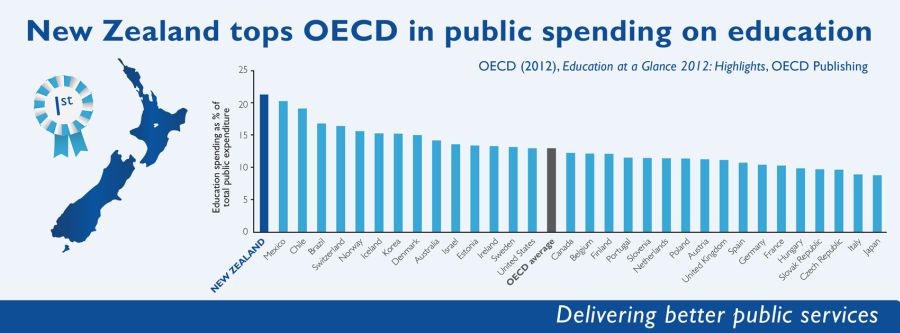Five Countries That Have The Right Approach To Funding Higher Education
By:
Germany made international news when it decided to eliminate college tuition entirely (before this, it was less than €1,000 -- the equivalent to $1,300 -- per year). Meanwhile in the United States, t he average per-year tuition cost is $9,139 for an in-state, four-year public college, $22,958 for an out-of-state, four-year public college, and $31,231 for a private, four-year college. The average American college student will graduate with more than $27,000 in debt, and college costs in the U.S. have gone up more than 1100 percent since 1978 with little sign of leveling off.
In light of Germany's actions, we decided to highlight five countries whose approaches towards financing higher education put ours to shame.
1. Germany

Nearly all college students in Germany (99 percent) attend public universities, funded by the government. These schools were free up until 2006, when the German government decided to allow them to charge up to €1,000 per year in tuition fees to shift some of the financial burden onto students. The ensuing eight years have seen mass protests (in the German state Hesse, 70,000 signatures were gathered), many politicians voted out of office, and, eventually, every German state reverted to the free tuition model.
Germany, which has the fourth largest economy in the world (behind the US, China, and Japan), once again has the government pick up the full tab for its citizens' higher education.
“We got rid of tuition fees because we do not want higher education [that] depends on the wealth of the parents," said Gabrielle Heinen-Kjajic, the minister for science and culture in Lower Saxony.
What a novel concept.
2. Denmark

Denmark's government provides university education completely free for its citizens as well as those of any country in the European Union.
It gets better. Denmark's government also provides monthly stipends to students for cost-of-living expenses (rent is less expensive in Denmark but food, transportation, and other goods tend to be slightly more expensive as compared to the United States according to Expatistan and Numbeo). Any student who needs additional money can get a low-interest government loan (Denmark's parliament sets the interest rate).
3. Australia

Australian universities charge tuition, and many students borrow money to attend school; however, Australia has a few tricks in place to help students manage debt.
For one, tuition varies based on your major. Majors that lead to a higher future income, like medicine, law, and business, cost more.
Second, students may pay as much of their tuition up front as they or their families can afford, and get a 10 percent discount. Any tuition costs not paid up front will be paid back by the student based on their future income (this system is known as HELP).
This is where it gets interesting. Australian graduates don't pay back a cent until their income reaches a certain level (around $51,000 per year). Then, they pay back between 4 percent and 8 percent of their income each year. However, if their income ever falls below the minimum level, they do not have to pay anything back until their income recovers. The most important part: no fees or interest accumulates on their debt during years where they earn below the $51,000 income threshold.
It should be noted that Australia's government is cutting its education budget, and as a result, Australian universities are expected to raise tuition at least 30 percent. The interest rate on loans is also expected to be tied to the ten-year government bond rate (6 percent), which is higher than the current interest rate tied to the Consumer Price Index (currently 2.9 percent).
4. New Zealand

Staying Down Under, Australia's neighbor New Zealand spends a greater percentage of its GDP (which essentially represents the size of a country's economy) on education than any country in the world. In New Zealand, there is no doubt that that education is a public good and is therefore worth substantial government investment.
Like Australia, New Zealand allows graduates to repay their loans based on how much they earn. And in 2006, New Zealand's government completely eliminated interest on student loans for all future students, meaning students will continue to pay back their loans based on their income level, but won't accrue interest.
As in Denmark, students in New Zealand also receive an allowance that does not need to be paid back.
5. United Kingdom

Almost all of UK's universities are public, and tuition is around £6,000 per year (which is a little less than $10,000 per year). No university can charge more than £9,000.
Students repay their debt on an income-contingent basis, meaning they are not required to make a payment until their income exceeds £21,000 (around $33,000). Students pay back 9 percent of any income over that threshold, and their payments are put on hold if their income drops below £21,000 per year.
So, even though many in the U.K. are upset that higher education tuition has tripled in recent years, theirs is still a system that is currently better than the United States.
